Matthew Wicker
University of Oxford
Model Guidance via Robust Feature Attribution
Jun 24, 2025Abstract:Controlling the patterns a model learns is essential to preventing reliance on irrelevant or misleading features. Such reliance on irrelevant features, often called shortcut features, has been observed across domains, including medical imaging and natural language processing, where it may lead to real-world harms. A common mitigation strategy leverages annotations (provided by humans or machines) indicating which features are relevant or irrelevant. These annotations are compared to model explanations, typically in the form of feature salience, and used to guide the loss function during training. Unfortunately, recent works have demonstrated that feature salience methods are unreliable and therefore offer a poor signal to optimize. In this work, we propose a simplified objective that simultaneously optimizes for explanation robustness and mitigation of shortcut learning. Unlike prior objectives with similar aims, we demonstrate theoretically why our approach ought to be more effective. Across a comprehensive series of experiments, we show that our approach consistently reduces test-time misclassifications by 20% compared to state-of-the-art methods. We also extend prior experimental settings to include natural language processing tasks. Additionally, we conduct novel ablations that yield practical insights, including the relative importance of annotation quality over quantity. Code for our method and experiments is available at: https://github.com/Mihneaghitu/ModelGuidanceViaRobustFeatureAttribution.
Certificates of Differential Privacy and Unlearning for Gradient-Based Training
Jun 19, 2024Abstract:Proper data stewardship requires that model owners protect the privacy of individuals' data used during training. Whether through anonymization with differential privacy or the use of unlearning in non-anonymized settings, the gold-standard techniques for providing privacy guarantees can come with significant performance penalties or be too weak to provide practical assurances. In part, this is due to the fact that the guarantee provided by differential privacy represents the worst-case privacy leakage for any individual, while the true privacy leakage of releasing the prediction for a given individual might be substantially smaller or even, as we show, non-existent. This work provides a novel framework based on convex relaxations and bounds propagation that can compute formal guarantees (certificates) that releasing specific predictions satisfies $\epsilon=0$ privacy guarantees or do not depend on data that is subject to an unlearning request. Our framework offers a new verification-centric approach to privacy and unlearning guarantees, that can be used to further engender user trust with tighter privacy guarantees, provide formal proofs of robustness to certain membership inference attacks, identify potentially vulnerable records, and enhance current unlearning approaches. We validate the effectiveness of our approach on tasks from financial services, medical imaging, and natural language processing.
Certified Robustness to Data Poisoning in Gradient-Based Training
Jun 09, 2024Abstract:Modern machine learning pipelines leverage large amounts of public data, making it infeasible to guarantee data quality and leaving models open to poisoning and backdoor attacks. However, provably bounding model behavior under such attacks remains an open problem. In this work, we address this challenge and develop the first framework providing provable guarantees on the behavior of models trained with potentially manipulated data. In particular, our framework certifies robustness against untargeted and targeted poisoning as well as backdoor attacks for both input and label manipulations. Our method leverages convex relaxations to over-approximate the set of all possible parameter updates for a given poisoning threat model, allowing us to bound the set of all reachable parameters for any gradient-based learning algorithm. Given this set of parameters, we provide bounds on worst-case behavior, including model performance and backdoor success rate. We demonstrate our approach on multiple real-world datasets from applications including energy consumption, medical imaging, and autonomous driving.
Certification of Distributional Individual Fairness
Nov 20, 2023Abstract:Providing formal guarantees of algorithmic fairness is of paramount importance to socially responsible deployment of machine learning algorithms. In this work, we study formal guarantees, i.e., certificates, for individual fairness (IF) of neural networks. We start by introducing a novel convex approximation of IF constraints that exponentially decreases the computational cost of providing formal guarantees of local individual fairness. We highlight that prior methods are constrained by their focus on global IF certification and can therefore only scale to models with a few dozen hidden neurons, thus limiting their practical impact. We propose to certify distributional individual fairness which ensures that for a given empirical distribution and all distributions within a $\gamma$-Wasserstein ball, the neural network has guaranteed individually fair predictions. Leveraging developments in quasi-convex optimization, we provide novel and efficient certified bounds on distributional individual fairness and show that our method allows us to certify and regularize neural networks that are several orders of magnitude larger than those considered by prior works. Moreover, we study real-world distribution shifts and find our bounds to be a scalable, practical, and sound source of IF guarantees.
Probabilistic Reach-Avoid for Bayesian Neural Networks
Oct 03, 2023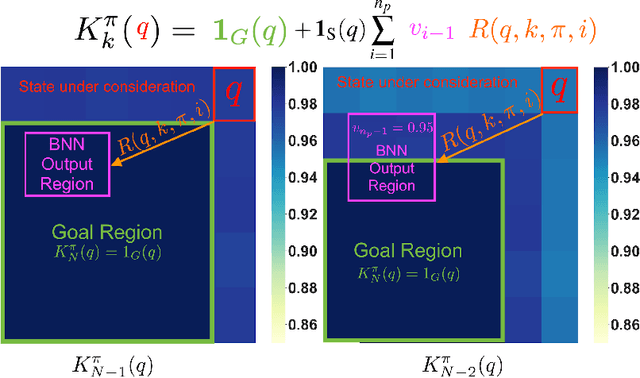

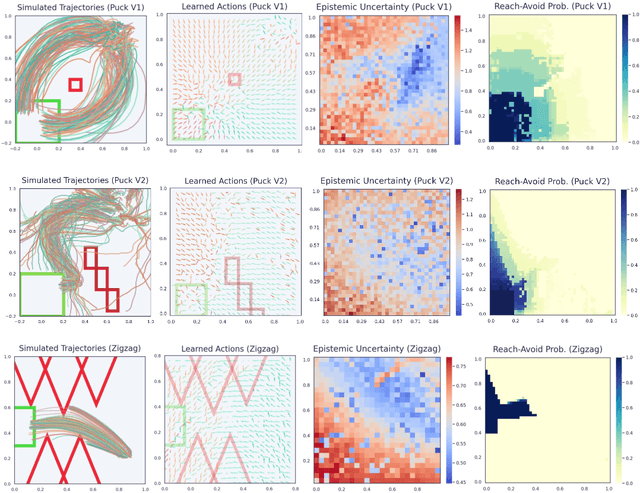

Abstract:Model-based reinforcement learning seeks to simultaneously learn the dynamics of an unknown stochastic environment and synthesise an optimal policy for acting in it. Ensuring the safety and robustness of sequential decisions made through a policy in such an environment is a key challenge for policies intended for safety-critical scenarios. In this work, we investigate two complementary problems: first, computing reach-avoid probabilities for iterative predictions made with dynamical models, with dynamics described by Bayesian neural network (BNN); second, synthesising control policies that are optimal with respect to a given reach-avoid specification (reaching a "target" state, while avoiding a set of "unsafe" states) and a learned BNN model. Our solution leverages interval propagation and backward recursion techniques to compute lower bounds for the probability that a policy's sequence of actions leads to satisfying the reach-avoid specification. Such computed lower bounds provide safety certification for the given policy and BNN model. We then introduce control synthesis algorithms to derive policies maximizing said lower bounds on the safety probability. We demonstrate the effectiveness of our method on a series of control benchmarks characterized by learned BNN dynamics models. On our most challenging benchmark, compared to purely data-driven policies the optimal synthesis algorithm is able to provide more than a four-fold increase in the number of certifiable states and more than a three-fold increase in the average guaranteed reach-avoid probability.
Adversarial Robustness Certification for Bayesian Neural Networks
Jun 23, 2023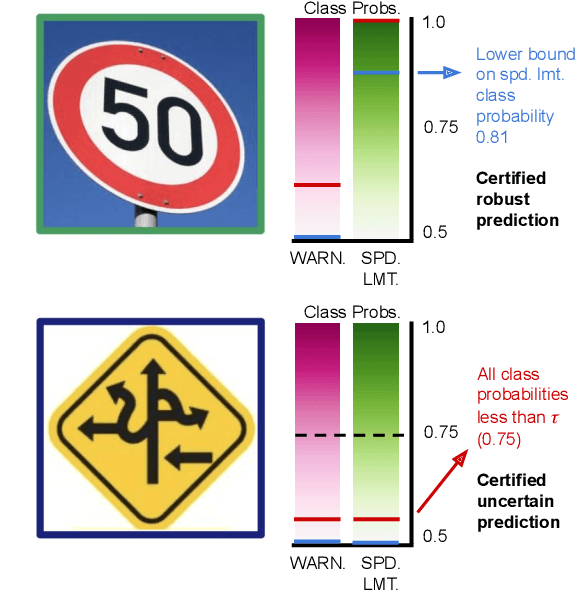
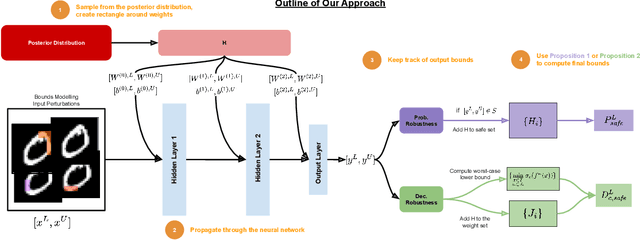
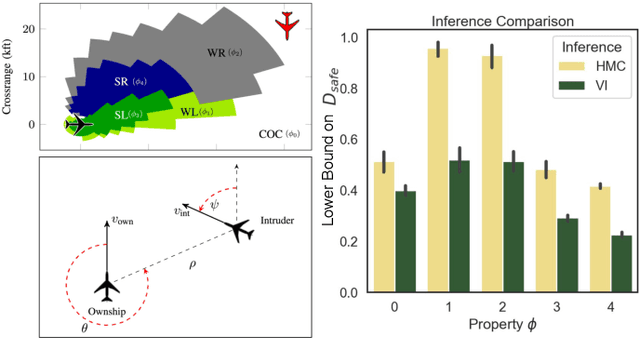
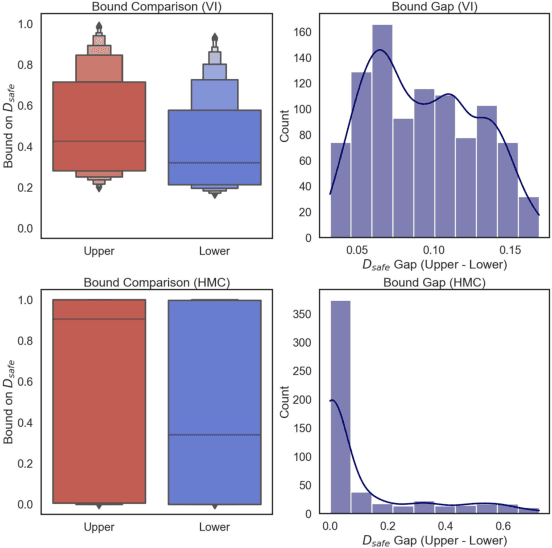
Abstract:We study the problem of certifying the robustness of Bayesian neural networks (BNNs) to adversarial input perturbations. Given a compact set of input points $T \subseteq \mathbb{R}^m$ and a set of output points $S \subseteq \mathbb{R}^n$, we define two notions of robustness for BNNs in an adversarial setting: probabilistic robustness and decision robustness. Probabilistic robustness is the probability that for all points in $T$ the output of a BNN sampled from the posterior is in $S$. On the other hand, decision robustness considers the optimal decision of a BNN and checks if for all points in $T$ the optimal decision of the BNN for a given loss function lies within the output set $S$. Although exact computation of these robustness properties is challenging due to the probabilistic and non-convex nature of BNNs, we present a unified computational framework for efficiently and formally bounding them. Our approach is based on weight interval sampling, integration, and bound propagation techniques, and can be applied to BNNs with a large number of parameters, and independently of the (approximate) inference method employed to train the BNN. We evaluate the effectiveness of our methods on various regression and classification tasks, including an industrial regression benchmark, MNIST, traffic sign recognition, and airborne collision avoidance, and demonstrate that our approach enables certification of robustness and uncertainty of BNN predictions.
Individual Fairness in Bayesian Neural Networks
Apr 21, 2023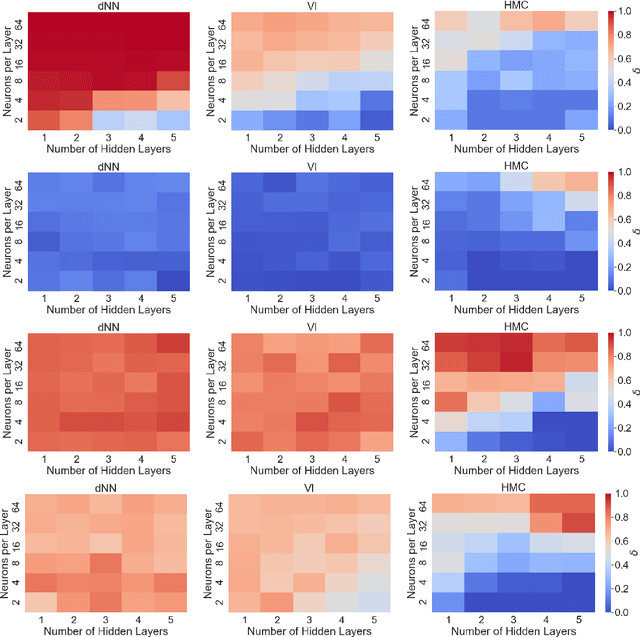
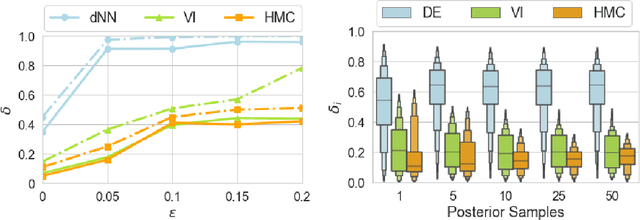
Abstract:We study Individual Fairness (IF) for Bayesian neural networks (BNNs). Specifically, we consider the $\epsilon$-$\delta$-individual fairness notion, which requires that, for any pair of input points that are $\epsilon$-similar according to a given similarity metrics, the output of the BNN is within a given tolerance $\delta>0.$ We leverage bounds on statistical sampling over the input space and the relationship between adversarial robustness and individual fairness to derive a framework for the systematic estimation of $\epsilon$-$\delta$-IF, designing Fair-FGSM and Fair-PGD as global,fairness-aware extensions to gradient-based attacks for BNNs. We empirically study IF of a variety of approximately inferred BNNs with different architectures on fairness benchmarks, and compare against deterministic models learnt using frequentist techniques. Interestingly, we find that BNNs trained by means of approximate Bayesian inference consistently tend to be markedly more individually fair than their deterministic counterparts.
Robust Learning from Explanations
Mar 11, 2023Abstract:Machine learning from explanations (MLX) is an approach to learning that uses human-provided annotations of relevant features for each input to ensure that model predictions are right for the right reasons. Existing MLX approaches rely heavily on a specific model interpretation approach and require strong parameter regularization to align model and human explanations, leading to sub-optimal performance. We recast MLX as an adversarial robustness problem, where human explanations specify a lower dimensional manifold from which perturbations can be drawn, and show both theoretically and empirically how this approach alleviates the need for strong parameter regularization. We consider various approaches to achieving robustness, leading to improved performance over prior MLX methods. Finally, we combine robustness with an earlier MLX method, yielding state-of-the-art results on both synthetic and real-world benchmarks.
Robust Explanation Constraints for Neural Networks
Dec 16, 2022Abstract:Post-hoc explanation methods are used with the intent of providing insights about neural networks and are sometimes said to help engender trust in their outputs. However, popular explanations methods have been found to be fragile to minor perturbations of input features or model parameters. Relying on constraint relaxation techniques from non-convex optimization, we develop a method that upper-bounds the largest change an adversary can make to a gradient-based explanation via bounded manipulation of either the input features or model parameters. By propagating a compact input or parameter set as symbolic intervals through the forwards and backwards computations of the neural network we can formally certify the robustness of gradient-based explanations. Our bounds are differentiable, hence we can incorporate provable explanation robustness into neural network training. Empirically, our method surpasses the robustness provided by previous heuristic approaches. We find that our training method is the only method able to learn neural networks with certificates of explanation robustness across all six datasets tested.
Emergent Linguistic Structures in Neural Networks are Fragile
Nov 15, 2022
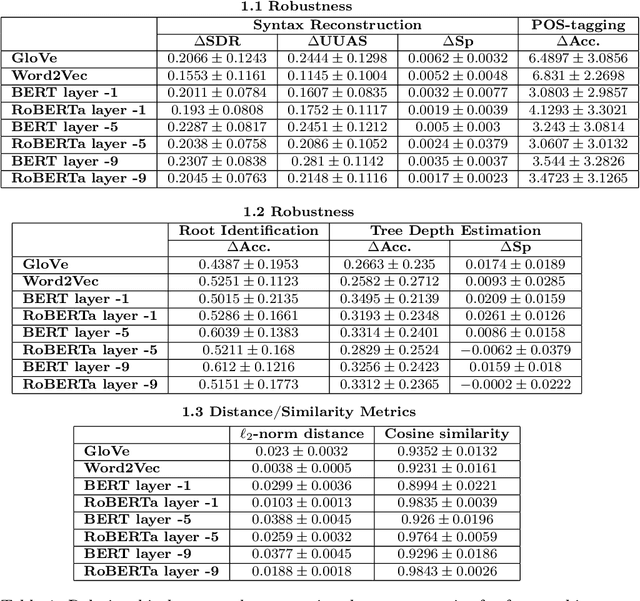
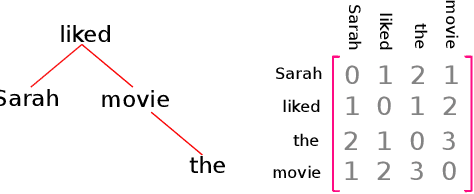
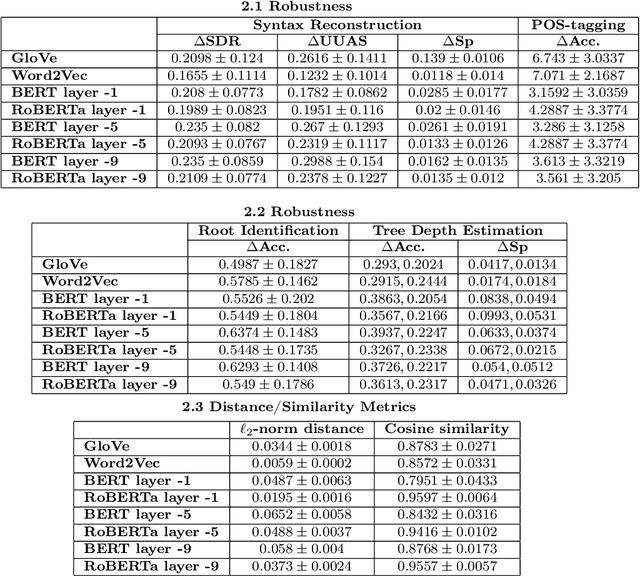
Abstract:Large language models (LLMs) have been reported to have strong performance on natural language processing tasks. However, performance metrics such as accuracy do not measure the quality of the model in terms of its ability to robustly represent complex linguistic structure. In this work, we propose a framework to evaluate the robustness of linguistic representations using probing tasks. We leverage recent advances in extracting emergent linguistic constructs from LLMs and apply syntax-preserving perturbations to test the stability of these constructs in order to better understand the representations learned by LLMs. Empirically, we study the performance of four LLMs across six different corpora on the proposed robustness measures. We provide evidence that context-free representation (e.g., GloVe) are in some cases competitive with context-dependent representations from modern LLMs (e.g., BERT), yet equally brittle to syntax-preserving manipulations. Emergent syntactic representations in neural networks are brittle, thus our work poses the attention on the risk of comparing such structures to those that are object of a long lasting debate in linguistics.
 Add to Chrome
Add to Chrome Add to Firefox
Add to Firefox Add to Edge
Add to Edge